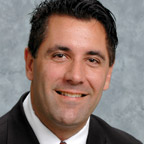Remote Deposit Check Capture for Businesses

We all know how convenient it is to move money around electronically with the click of a mouse or the touch of a phone key. And now, with a service called remote deposit capture (RDC), many businesses are able to make deposits electronically without ever leaving the office.
In October of 2004, The Check Clearing Act (Check 21) took effect and accelerated the migration from paper to electronic check processing. This legislation was passed in the wake of 9/11, when transportation disruptions severely impacted the financial services industry. Thanks to Check 21, financial institutions can process digital check images and collect funds electronically, which is faster and more efficient. Today, remote deposit capture enables businesses to enjoy those benefits, too.
With remote deposit capture, businesses use special software and a scanner to make deposits electronically. The software scans the front and back images of checks and forwards a digital image for processing over a secure internet connection without ever having to physically deliver check deposits. Once a deposit is made, it’s generally credited to the account immediately or on the next business day, depending on the financial institution’s policies and cutoff times. It’s a cost-effective, efficient and environmentally-friendly way to handle deposits 24 hours a day, seven days a week.
Once a deposit is made via RDC, accountholders must maintain quality records of the deposit’s date, batch number, transaction count and a confirmation number. In addition, the original check must be securely retained for a period of time following the deposit, typically 90 days. After this retention period, the original check may be disposed of through a secure means such as shredding.
RDC is an excellent choice for businesses with a high volume of check deposits or businesses for which it’s not convenient to physically drop off deposits. In order to qualify for the service, businesses generally need to demonstrate financial stability and a successful business history. Costs for this service can vary, and there may be a monthly fee, a per-item fee or both.
When looking at options to set up RDC, businesses should consider:
- The total upfront cost to set up RDC. Some financial institutions may provide a special check scanner automatically at setup, while others may require its purchase at an additional cost. Software licenses may be included or separate, so it’s important to ask.
- Ongoing costs. While there are fees for RDC, your business will also save money and time through not having to physically transport checks for deposit. You may also improve cash flow by having deposits credited sooner than you might through a traditional deposit.
- Security. Consider if your business is able to maintain records securely and dispose of the original checks by secure means after the retention period is over. Additionally, consider if your business can properly secure the equipment and software.
As financial services continue to evolve, businesses can expect to see more convenient, efficient options as well. That’s why it’s important to have a relationship with a financial institution you can trust. iBi

